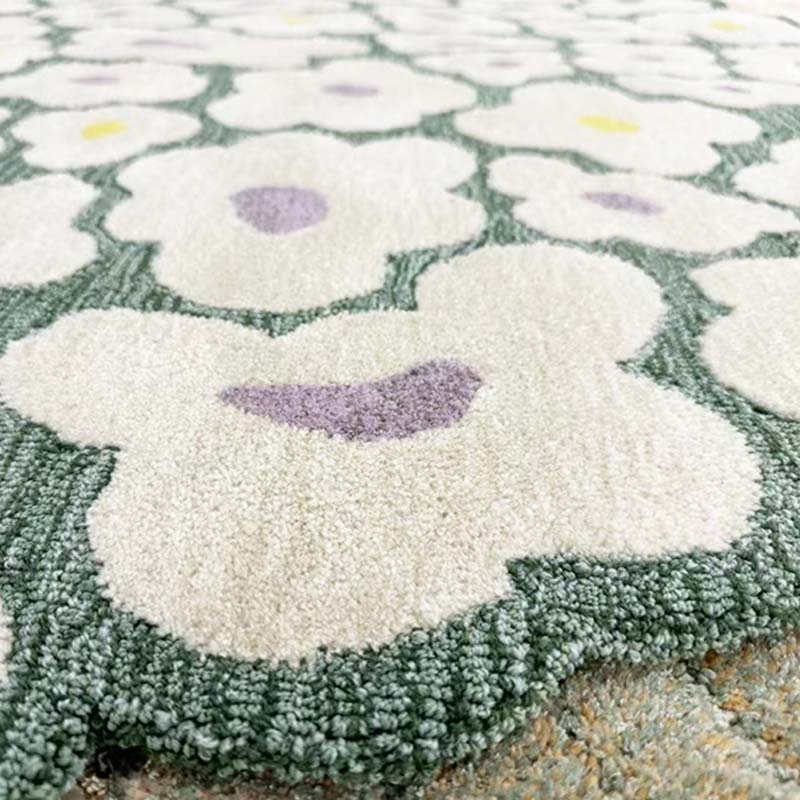In the world of interior design and commercial spaces, making a statement is about more than just aesthetics—it’s about values. A green wool carpet is a powerful choice that combines sophisticated style with a profound commitment to sustainability and well-being. Beyond its captivating color, wool’s natural properties and eco-friendly lifecycle make it a superior choice for businesses, designers, and homeowners who prioritize both beauty and environmental responsibility. This article will explore why a green wool carpet is a foundational element for creating a healthy, durable, and ethically sound space.
The Synergy of Style and Sustainability
Choosing a green wool carpet is a strategic decision that offers a compelling blend of design appeal and practical, eco-conscious benefits.
- A Natural and Renewable Resource: Wool is an annually renewable fiber. Sheep grow a new fleece every year, making it a highly sustainable alternative to synthetic materials derived from fossil fuels. This natural lifecycle minimizes environmental impact.
- Superior Durability and Longevity: Wool fibers are exceptionally resilient, with a natural crimp that allows them to spring back into shape after being compressed. This makes a wool carpet resistant to heavy foot traffic, ensuring it maintains its plush appearance and structural integrity for decades, reducing the need for frequent replacement.
- Natural Air-Purifying Properties: Wool fibers can naturally trap airborne particles, volatile organic compounds (VOCs), and other pollutants, acting as a passive air filter. This property helps improve indoor air quality, contributing to a healthier environment for employees, clients, and residents.
- Hypoallergenic and Safe: Wool is naturally flame-retardant and does not emit harmful chemicals or gases. Its ability to absorb moisture and release it back into the air helps regulate humidity, creating a comfortable and hypoallergenic indoor climate.
Key Considerations for Choosing Your Green Wool Carpet
To ensure you select the perfect green wool carpet for your project, focus on these key factors.
- Shade and Tone:
- Green is a versatile color that can be calming, invigorating, or luxurious. Consider the specific shade to match the mood and function of the space.
- Lighter, muted greens can create a serene, natural feel, while deeper, more saturated greens add a touch of drama and sophistication.
- Pile Type and Texture:
- Loop Pile: Ideal for commercial settings and high-traffic areas, this type offers a rugged, durable texture that hides marks and wear.
- Cut Pile: Provides a softer, more luxurious feel. Perfect for executive offices, hotels, or residential living spaces where comfort is a priority.
- Patterned and Multi-level: Use patterned or multi-level pile carpets to add visual interest and help disguise soiling.
- Certifications and Sourcing:
- Look for certifications that ensure ethical and sustainable production. The Woolmark certification, for example, guarantees pure, high-quality wool.
- Consider suppliers who can provide details on their manufacturing process, including the use of eco-friendly dyes and minimal waste practices.
Summary
A green wool carpet is a powerful statement of style, quality, and environmental responsibility. Its natural durability, air-purifying properties, and long-lasting beauty make it a superior choice for any B2B or residential project aiming for excellence. By carefully selecting the right shade and texture and prioritizing sustainable sourcing, businesses and designers can create spaces that are not only visually stunning but also genuinely healthy and conscientious.
FAQ
Q1: How do wool carpets help with indoor air quality? A: Wool fibers naturally absorb common indoor air pollutants like VOCs, formaldehyde, and nitrogen dioxide, trapping them within the fiber structure and helping to create a healthier, cleaner breathing environment.
Q2: Is a green wool carpet difficult to maintain? A: No, wool’s natural protective lanolin coating makes it resistant to dirt and spills. Regular vacuuming is sufficient for routine cleaning, and most spills can be blotted up easily before they set.
Q3: Are wool carpets truly flame-retardant? A: Yes, wool has a high protein and moisture content, making it naturally resistant to fire. It is difficult to ignite and is self-extinguishing, making it a safer option for commercial and residential applications compared to synthetic materials.
Q4: How does a wool carpet contribute to a project’s sustainability goals? A: Wool is a renewable resource, biodegradable, and has a lower carbon footprint than synthetic materials. Its exceptional durability also means it needs to be replaced less frequently, reducing long-term waste.
Post time: Aug-19-2025












